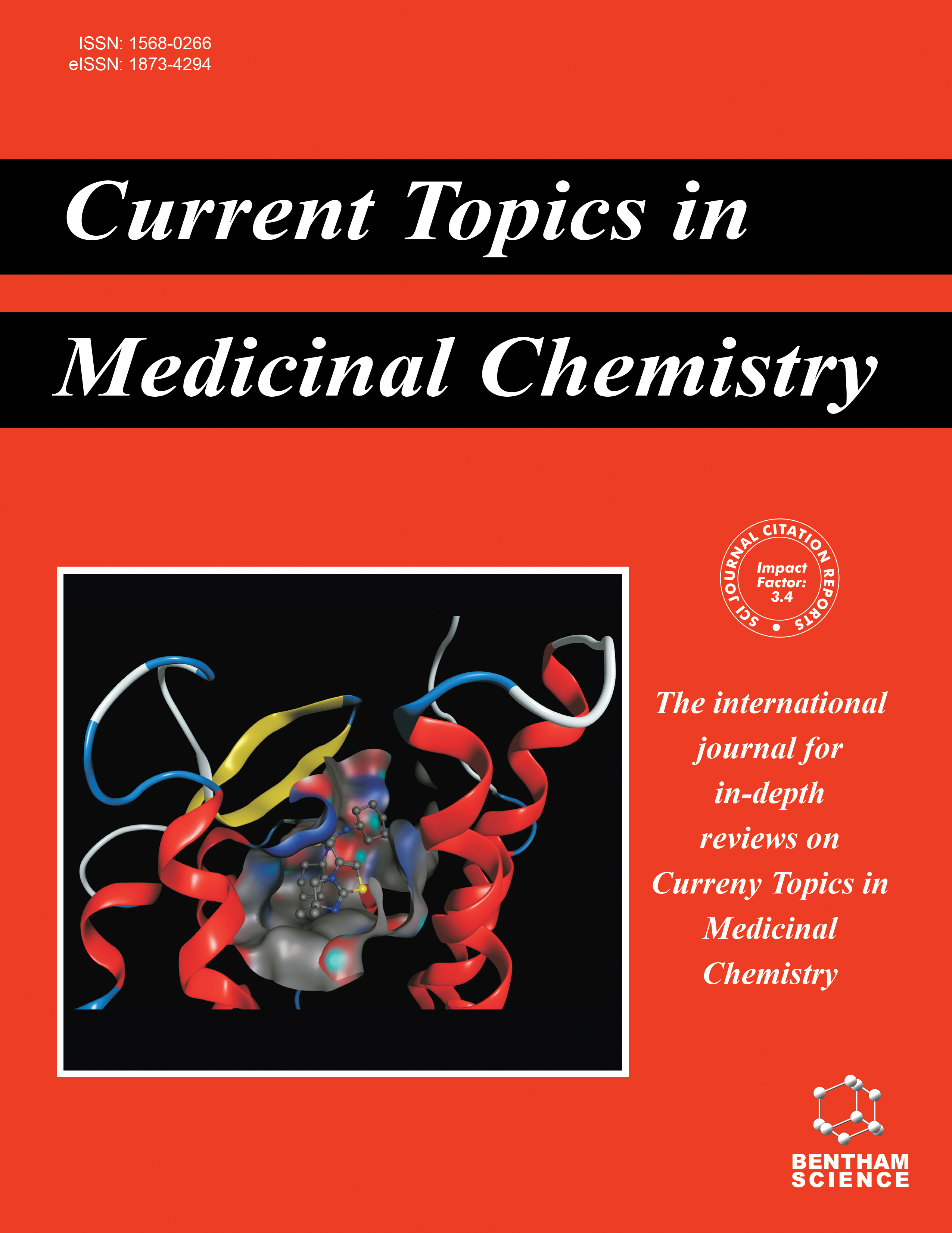- Home
- A-Z Publications
- Current Topics in Medicinal Chemistry
- Previous Issues
- Volume 11, Issue 16, 2011
Current Topics in Medicinal Chemistry - Volume 11, Issue 16, 2011
Volume 11, Issue 16, 2011
-
-
Editorial [Hot Topic:Drug Targets for the Treatment of Protozoan Parasitic Diseases (Guest Editor: Luke Guddat)]
More LessBy Luke GuddatInfections caused by the invasion of protozoan parasites into human hosts represent one of the most serious public health problems in the world today with approximately one billion people living in areas of risk. Such diseases include: (i) malaria, caused by Plasmodium spp, with falciparum and vivax being the most lethal and prevalent species; (ii) visceral leishmaniasis caused by Leishmania donovani, infantum or chagasi (iii Read More
-
-
-
Macromolecular Bases of Antischistosomal Therapy
More LessSchistosomiasis is a widespread tropical parasitic disease, currently treated with Praziquantel, whose precise molecular target is actually unknown. Several other drugs are known to kill the schistosomes in vivo and in vitro, but these are seldom employed because of toxicity, high cost, complex administration or other reasons. The improvement of known drugs or the development of entirely new ones is a desirable goal, in view o Read More
-
-
-
Drug Target Identification in Intracellular and Extracellular Protozoan Parasites
More LessAuthors: Joachim Muller and Andrew HemphillThe increasing demand for novel anti-parasitic drugs due to resistance formation to well-established chemotherapeutically important compounds has increased the demands for a better understanding of the mechanism(s) of action of existing drugs and of drugs in development. While different approaches have been developed to identify the targets and thus mode of action of anti-parasitic compounds, it has become clear that Read More
-
-
-
Apical Membrane Antigen 1 as an Anti-Malarial Drug Target
More LessAuthors: Christopher A. MacRaild, Robin F. Anders, Michael Foley and Raymond S. NortonThe invasion of host cells by malaria parasites represents an attractive target for therapeutic intervention. The role played by apical membrane antigen 1 (AMA1) in this process has been elucidated recently with the demonstration that AMA1 forms a complex with parasite rhoptry neck (RON) proteins as part of the moving junction that develops between the host cell and the invading parasite. Structural studies of AMA1 alone a Read More
-
-
-
Isoprenoid Precursor Biosynthesis Offers Potential Targets for Drug Discovery Against Diseases Caused by Apicomplexan Parasites
More LessTwo, simple, C5 compounds, dimethylally diphosphate and isopentenyl diphosphate, are the universal precursors of isoprenoids, a large family of natural products involved in numerous important biological processes. Two distinct biosynthetic pathways have evolved to supply these precursors. Humans use the mevalonate route whilst many species of bacteria including important pathogens, plant chloroplasts and apicomplexan Read More
-
-
-
Sterol 14alpha-Demethylase (CYP51) as a Therapeutic Target for Human Trypanosomiasis and Leishmaniasis
More LessAuthors: Galina I. Lepesheva and Michael R. WatermanPathogenic protozoa threaten lives of several hundred million people throughout the world and are responsible for large numbers of deaths globally. The parasites are transmitted to humans by insect vectors, more than a hundred of infected mammalian species forming reservoir. With human migrations, HIV-coinfections, and blood bank contamination the diseases are now spreading beyond the endemic tropical countri Read More
-
-
-
Trypanocidal Activity of Nitroaromatic Prodrugs: Current Treatments and Future Perspectives
More LessAuthors: Shane R. Wilkinson, Christopher Bot, John M. Kelly and Belinda S. HallChagas disease and African sleeping sickness are trypanosomal infections that represent important public health problems in Latin America and Africa, respectively. The restriction of these diseases to the poorer parts of the world has meant that they have been largely neglected and limited progress has been made in their treatment. The nitroheterocyclic prodrugs nifurtimox and benznidazole, in use against Chagas disease f Read More
-
-
-
6-Oxopurine Phosphoribosyltransferase: A Target for the Development of Antimalarial Drugs
More LessAuthors: John de Jersey, Antonin Holy, Dana Hockova, Lieve Naesens, Dianne T. Keough and Luke W. GuddatMalaria remains the most serious parasitic diseases affecting humans in the world today, resulting in 1-2 million fatalities each year. Plasmodium falciparum (Pf) and Plasmodium vivax (Pv) are the predominant causative agents. Both are responsible for widespread mortality and morbidity and are a serious socio-economic burden, especially for countries in the developing world. One of the most important defences against mala Read More
-
-
-
Purine and Pyrimidine Pathways as Targets in Plasmodium falciparum
More LessAuthors: Maria Belen Cassera, Yong Zhang, Keith Z. Hazleton and Vern L. SchrammMalaria is a leading cause of morbidity and mortality in the tropics. Chemotherapeutic and vector control strategies have been applied for more than a century but have not been efficient in disease eradication. Increased resistance of malaria parasites to drug treatment and of mosquito vectors to insecticides requires the development of novel chemotherapeutic agents. Malaria parasites exhibit rapid nucleic acid synthesi Read More
-
Volumes & issues
-
Volume 25 (2025)
-
Volume 24 (2024)
-
Volume 23 (2023)
-
Volume 22 (2022)
-
Volume 21 (2021)
-
Volume 20 (2020)
-
Volume 19 (2019)
-
Volume 18 (2018)
-
Volume 17 (2017)
-
Volume 16 (2016)
-
Volume 15 (2015)
-
Volume 14 (2014)
-
Volume 13 (2013)
-
Volume 12 (2012)
-
Volume 11 (2011)
-
Volume 10 (2010)
-
Volume 9 (2009)
-
Volume 8 (2008)
-
Volume 7 (2007)
-
Volume 6 (2006)
-
Volume 5 (2005)
-
Volume 4 (2004)
-
Volume 3 (2003)
-
Volume 2 (2002)
-
Volume 1 (2001)
Most Read This Month
Article
content/journals/ctmc
Journal
10
5
false
en


